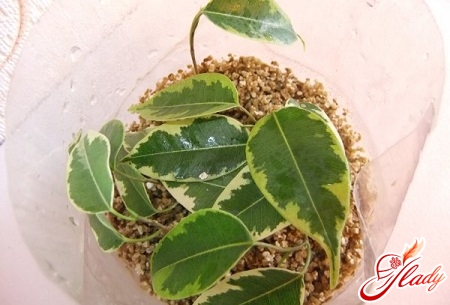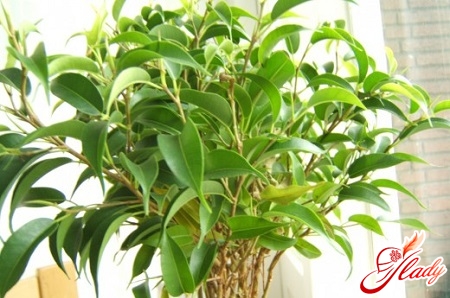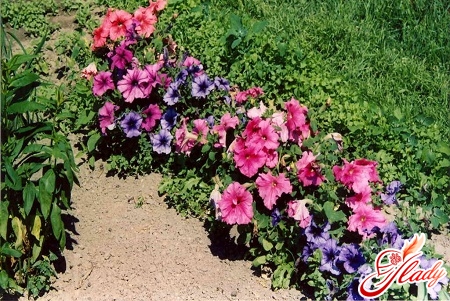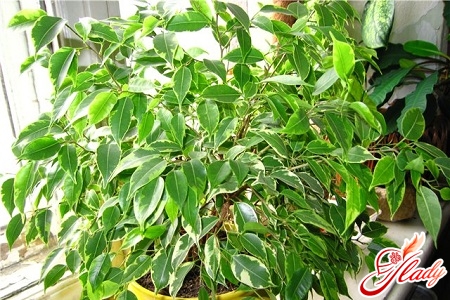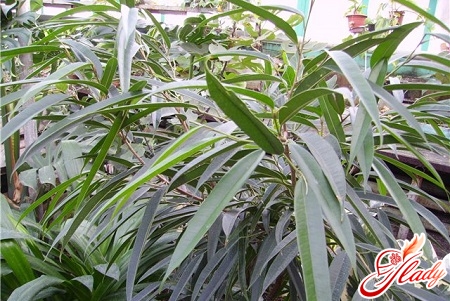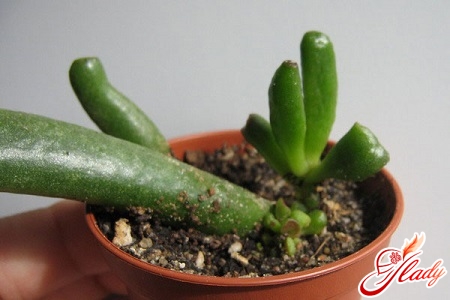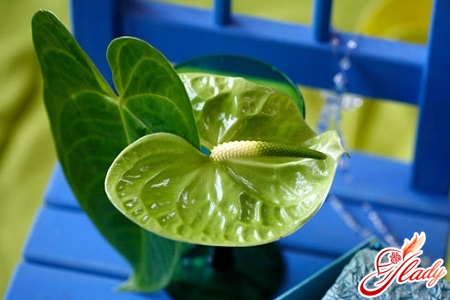 All people are divided into those who breed indoor plantsflowers, and those who do not breed them. And if you are reading these lines, then you probably belong to the category of lovers of green pets. Moreover, you are interested in the Anthurium flower or, as it is called in everyday life, Male happiness. This indoor flower is actually interesting. And, first of all, because in indoor floriculture it is represented by many species that differ in shape, texture, size and color of leaves and flowers. Many want to have such a multi-faceted beauty in their home, but not everyone knows how to care for an anthurium. However, the matter can be fixed. We will try to find out what kind of plant it is - Anthurium, what is remarkable about its flowering, what kind of care it requires, and how to grow it at home.
All people are divided into those who breed indoor plantsflowers, and those who do not breed them. And if you are reading these lines, then you probably belong to the category of lovers of green pets. Moreover, you are interested in the Anthurium flower or, as it is called in everyday life, Male happiness. This indoor flower is actually interesting. And, first of all, because in indoor floriculture it is represented by many species that differ in shape, texture, size and color of leaves and flowers. Many want to have such a multi-faceted beauty in their home, but not everyone knows how to care for an anthurium. However, the matter can be fixed. We will try to find out what kind of plant it is - Anthurium, what is remarkable about its flowering, what kind of care it requires, and how to grow it at home.
Botanical portrait
Anthurium is actually a huge genus.plants, which has about a thousand species and belongs to the Araceae family. The majority of plants in this genus are epiphytes, that is, they have aerial roots and shortened stems. However, among anthuriums, there are also vines with long stems, and herbaceous land plants that grow in tropical and subtropical areas of North America. Anthuriums also grow in South America (Argentina, Mexico, Paraguay, Brazil). All types of anthurium have leathery leaves. However, the shape and size of different species vary greatly. There are anthuriums with whole, dissected and incised leaves. There are specimens with miniature leaflets and real giant leaves that reach a meter in length. There are flowers with velvety and satin leaves. There are plants with single-color foliage, and there are those that have a silvery pattern on the leaves. The flowers of representatives of this genus are no less interesting. By the way, the flowering of anthurium served as the source of its botanical name. In Greek, this name is translated as "tail flower". In fact, anthurium has inflorescences in the form of a tail-shaped or long cylindrical cob. But the inflorescence itself is rather nondescript, and the decorative effect of the plant is given by the bracts - the spathe. Although most species have a small and dull colored bract, there are anthuriums with large bracts of bright colors, shiny or matte texture. By the way, for the unusual shape of the inflorescences, in some countries anthurium is called the flamingo flower. Indeed, the flowering of anthurium often evokes associations with these graceful birds. It is precisely the colorful flowering of these plants that served as their widespread distribution in culture. Not only do some species of this flower have a special decorative effect, today there are about eighty artificially bred hybrids and a huge number of cultivars. On an industrial scale, anthuriums are grown as cut flowers, and in indoor floriculture and garden culture, anthurium is known as a decorative foliage plant, which is also distinguished by spectacular flowering.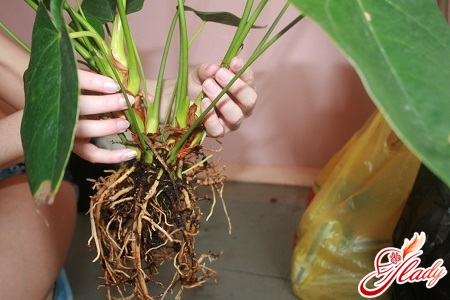
Species and varieties of anthuriums
In domestic garden and indoor culture, only a few species and varieties of representatives of this genus are particularly popular.
- Anthurium Andre
Botanical name Anthurium andraeanumLinden ex Andre. The species that became the progenitor of most known hybrids. In nature, it grows in the humid tropics of Colombia and Ecuador. This plant is an epiphyte with aerial roots and a shortened stem. Anthurium Andre has dark green leaves, heart-shaped and large, which reach twenty centimeters in width and forty centimeters in length. The flower is a light spadix with a large bright cover, also heart-shaped and with a strong shine. Flowering lasts more than a month, and in cut flowers remain fresh for about four weeks. After flowering, the cover does not fall off, but becomes rough and fades. At the same time, Anthurium Andre retains its decorative effect almost all the time.
- Anthurium Baker
Botanical name Anthurium bakeri Hook. f.It grows in the tropics of South America. Anthurium bakeri is an epiphyte plant with long, belt-shaped leaves up to half a meter long and up to nine centimeters wide. The underside of the leaf is covered with brown specks. The inflorescence is short - a cream spadix and a pale yellow-green cover with a purple border.
- Anthurium majestic
Botanical name: Anthurium magnificumLinden. It is common as a terrestrial plant or epiphyte in the mountain rainforests of Colombia. Anthurium majesticum has a distinctive feature - a tetrahedral petiole with sharp edges in the form of wings. It is similar in appearance to Anthurium crystallinum. Its leaves have olive-green veins, and the inflorescence cover is longer than that of other species.
- Anthurium crystal
Botanical name Anthurium crystallinumLind. et Andre. In nature, Anthurium crystal is known as an epiphyte of tropical forests, the habitat of which extends from Peru to Panama. The leaves are velvety, decorated with contrasting veins. They reach forty centimeters in length and twenty-two in width. Green or purple-hued covers rise on long peduncles.
- Anthurium Hooker
Botanical name Anthurium hookeri Kunth.Anthurium hookeri grows in the monsoon forests of the Antilles. The leaves are wide, bright green, decorated with black dots. The spathe of the spadix is narrow and long, green, and the spadix itself is purple.
- Anthurium Scherzer
Botanical name Anthurium scherzerianumSchott. Anthurium scherzerianum is a terrestrial plant or epiphyte of the mountain forests of Costa Rica. Dark green leaves are lanceolate or elliptical, matte, with a pattern of black dots. The bracts are bright shades of red and orange, up to twelve centimeters long and six centimeters wide. Anthurium scherzerianum is cultivated mainly as a cut flower.
- Anthurium climbing
Botanical name: Anthurium scandens.An epiphyte with a meter-long stem, common from Mexico to Brazil. The leathery lanceolate leaves are covered with black dots underneath. The bract is pale green, the spadix is yellowish-green. Climbing anthurium is valued for its easy flowering and shade tolerance.
- Anthurium many-sectioned
Botanical name: Anthurium polyschistumSchult. et Idrobo. It grows in the humid forests of the Amazon Valley. A characteristic feature is the dissected (palmate) leaves, wavy at the edges. The bract and the spadix are of the same length. During flowering, the spathe is strongly bent back. In indoor floriculture, Anthurium multidissecta is valued as a mini-liana.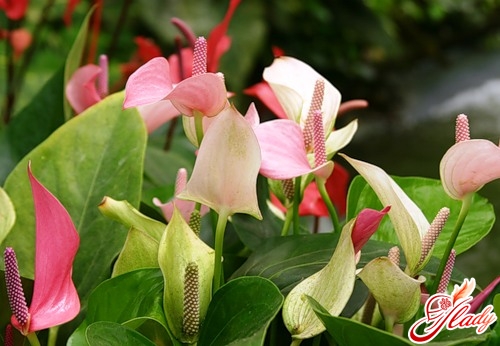
Care
Almost all anthuriums known for indoor growingfloriculture, - epiphytes. Therefore, the care of anthurium should be appropriate to the care of these plants. How to care for anthurium at home? These are light-loving plants that need to be kept in rooms with diffused light. At the same time, anthurium must be shaded from direct sunlight. The best place for the flower will be a northwest window. A comfortable temperature for this plant is from 20 to 28 degrees Celsius in summer and 15-16 degrees Celsius in winter. However, anthurium hybrids require maintenance at a temperature of 12-16 degrees during the period of laying flower buds (September-February). Only under such conditions is their flowering possible. If you want flowering to occur earlier, then from January you need to gradually increase the temperature in the room where the anthurium is kept to twenty-five degrees. Indoor anthurium should be watered abundantly. However, the soil in the pot should be allowed to dry out to about a third of the flowerpot's height between waterings. You can check the soil mixture's moisture level by sticking a wooden stick into the soil. To ensure that anthurium blooms abundantly, it is necessary to increase the intervals between waterings starting in September. Water anthurium only with soft, settled water, and wipe the bottom of the flowerpot and tray dry immediately after watering, as stagnant water can cause root rot. As for air humidity, it should be high (up to 95%). Anthurium suffers from dry air, and its flowering may not occur. Therefore, it is necessary to constantly spray anthurium, and cover the stems with hygroscopic material (for example, sphagnum moss). To increase air humidity near the plant, you can fill the tray of the flowerpot with moistened expanded clay or gravel. It is also necessary to periodically wipe the anthurium from dust. Important! During flowering, spray anthurium carefully so that drops of water do not fall on the flowers, otherwise dark spots will remain on them. Proper care of anthurium also implies regular fertilizing. Feed indoor anthurium with diluted complex fertilizers two or three times a month. Anthurium responds most to foliar fertilizing on the leaf. Transplant (roll over) anthurium as it grows, and transplant young plants annually. To grow anthurium, you need to select a loose substrate that allows moisture and air to pass through well. It is especially important that the soil mixture in which anthurium is grown consists of large particles. Approximate composition of the substrate for anthurium: chopped moss (two parts), peat (two parts), turf soil (one part). Or: leaf soil (two parts), chopped moss (one part), turf soil (one part).
Reproduction
You can propagate indoor anthurium vegetativelyor seeds. Vegetative propagation uses apical cuttings or stem shoots. Shoots with aerial roots are immediately planted in flower pots, and apical cuttings are pre-rooted in wet sand. In this case, the cuttings should be covered with transparent film or a container. In seed propagation, artificial pollination must be carried out when flowering occurs. To do this, use a soft brush to transfer pollen from flower to flower. But in this case, the flowers of the pollinated anthurium must be of varying degrees of maturity. Pollination is carried out several times. The seeds in the anthurium berries ripen eight to ten months after pollination. Immediately after collecting the seeds, they are sown in shallow bowls filled with light soil, spreading the seeds on the surface of the soil and lightly pressing them into the ground. Then the container with the seeds is covered with glass. In about two weeks, shoots germinate from the seeds. After the appearance of a true leaf, the seedlings are pricked out and grown at constant humidity and temperature.
Possible problems
Diseases that anthurium plants are susceptible to,— these are stem and root rot and anthracnose. Rot can be caused by low room temperatures and waterlogged soil. In case of anthracnose, anthurium is treated with fungicides. If there is too much calcium in the soil, the tips of the leaves turn black, and the leaves curl in drafts, too dry air, sunburn and insufficient lighting. In addition to diseases, anthurium can suffer from attacks by mites, aphids, scale insects and mealybugs. In these cases, the plant is treated with a weak infusion of tobacco, the leaves and stems are washed with soapy water and treated with special preparations. If you follow the rules for caring for this flower and grow it in favorable conditions for the plant, flowering occurs regularly and on time. Well, the fact that anthurium is quite capricious is understandable. After all, it comes from humid and warm tropics, the climate of which is quite difficult to recreate at home. But if you try, you will succeed - now you know how to care for anthurium. Good luck!




